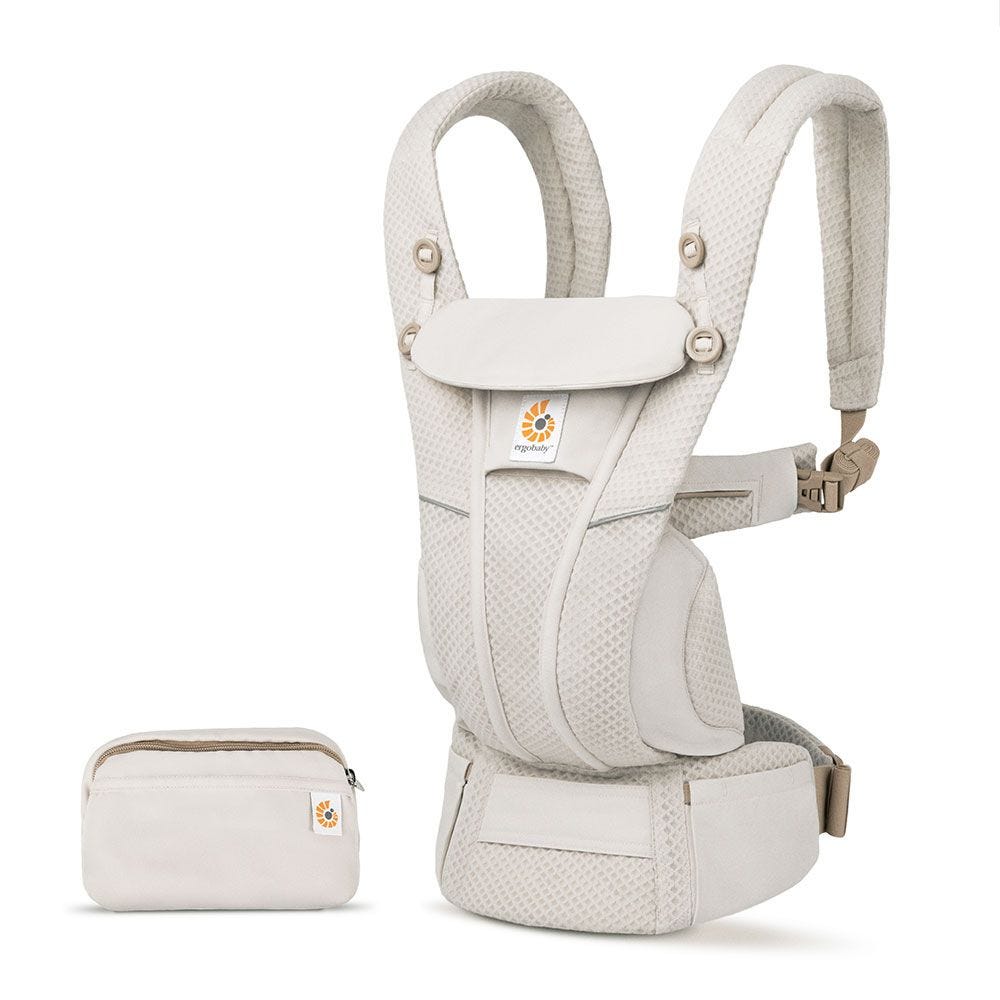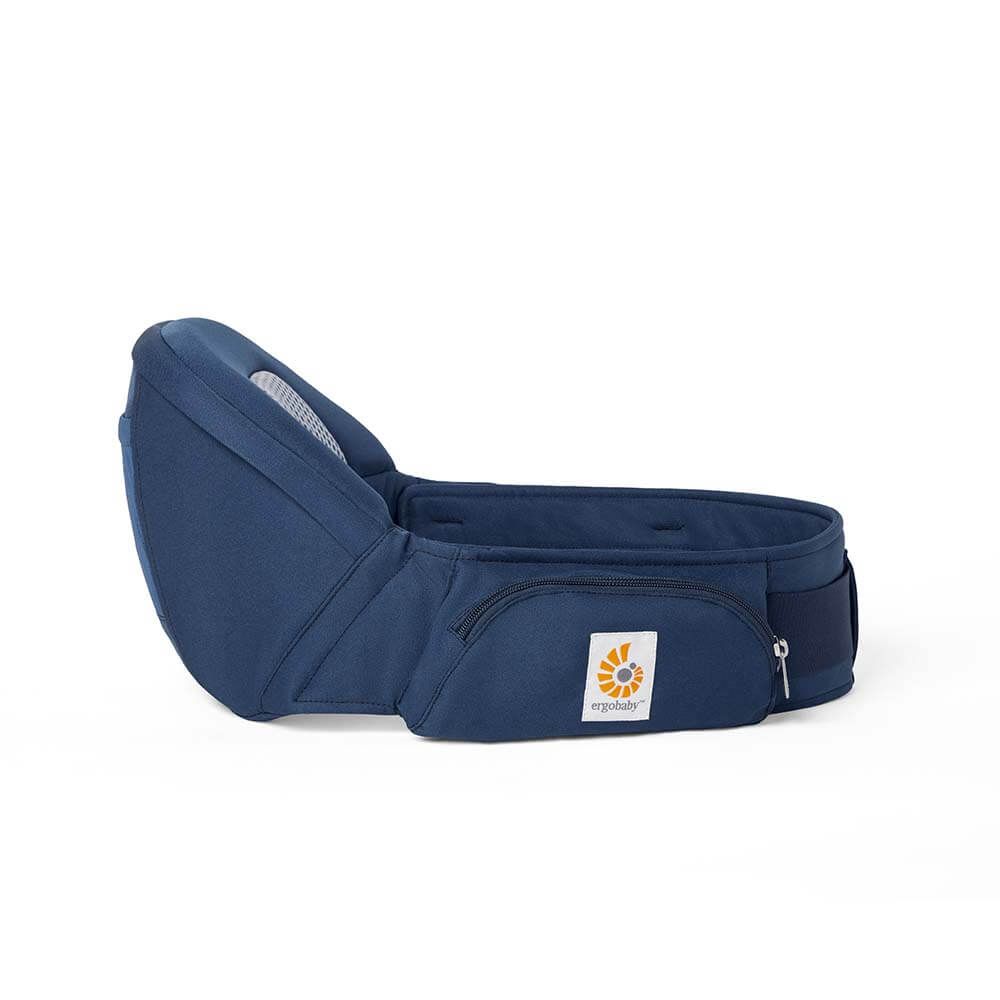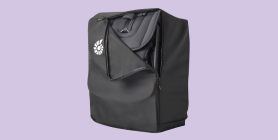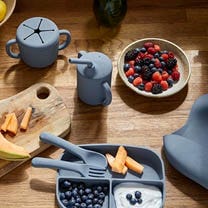Page 10 - Ergobaby
Going on holiday with your baby is exciting but getting ready for a trip can feel more like work than vacation.
Travelling with baby can be intimidating, but it’s not impossible. The joys of discovering new places and the comfort of a hotel (where you don't have to clean or cook), walks on the beach can put your mind at rest and recharge your batteries.
That said, whether you’re getting to your destination by plane, train or automobile, you’ll still want to prepare to ensure your journey goes as smoothly as possible. Find out how our Ergobaby summer essentials can help you have a relaxing holiday with your baby.
What sort of accommodation to book on holiday with your baby?
The best way to travel with your baby will depend on time, location and budget - so take some time to work out what suits your family best.
Package holidays offer you the comfort of not having to worry about drinks and meal preparation when you book half-board or all-inclusive. Many family-friendly hotels also have a
Do you find yourself staring at your new baby sleeping and wondering “how many naps does my baby actually need?” Our UK sleep specialist Gemma Coe is a mum of two herself and is a certified baby and child sleep consultant. She helps families all over the world develop healthy sleep habits. Today, Gemma gives us some best advice for your baby's nap sleep depending on their age.
Did you know, until your little one gets to about 3 years of age, they’re likely to spend more time asleep than awake?! Nap time brings relief, allowing your baby to rest and for you to have a bit of down time, or just catch up on those million other things on the to-do list!
Daily naps provide your little one with some much needed rest throughout the day. Think about your child’s growth, it is exhausting! Naps allow those little bodies to recover and brains to process everything they’ve learnt.
Naps are as important as sleep at night and give us our total sleep duration (day sleep + sleep at night), check out Gemma’s
Have you ever tried a baby carrier and not really felt comfortable in it? Did it pinch, squeeze or maybe even hurt? Was your back tense? Or the carrier just felt too big for your shoulders? If any of these are the reason why you have decided against a baby carrier, we are here to help and ensure you are comfortable. There is a suitable baby carrier for everyone, and more often than not the correct adjustment of your baby carrier is what decides whether it feels good or uncomfortable. So let our Midwife and Babywearing Consultant Katrin Ritter take you on a journey into the world of baby carriers and explain how you can adjust a baby carrier correctly.
Where to start, a wrap or baby carrier?
For all babywearing beginners, we would like to make a brief distinction between the different carriers. There are wraps, such as our Ergobaby Aura, which are tied around your body to carry your little one. Baby carriers, which include our Ergobaby Embrace, Omni Breeze, Omni Dream, Adapt or Aerloom -
Yaaay, your first family holiday with your baby! Travelling with a baby is a whole new experience, and it can be pretty daunting, but we are here to help! With the right preparation you can limit the turbulence of your first flight with baby. We have summarised the most commonly asked questions and answers to give you all the information you need for flying with a baby.
When can I fly with my baby for the first time?
It's probably sooner than you think. According to Baby Center, most airlines will insist that your baby is at least two weeks old but depending where you live and where you are flying to there are no standard regulations, so it's best to check with your airline before you book. Some airlines may ask you to provide a fit-to-fly letter from your doctor if your baby is less than two weeks old.
If you gave birth by caesarean section, you may need to wait until after your six-week postnatal check-up before you take to the skies. Even then, you should only fly when your GP gives
Did you know that the development of a child's teeth begins in early pregnancy? However, it takes until infancy for the first teeth to become visible. But what about brushing your baby's teeth? Baby teeth need different care than those of children or adults. Since the foundation for a healthy dental life is laid in infancy and toddlerhood, our midwife and babywearing consultant Katrin Ritter answers the most frequently asked questions about baby's teeth, teething and dental care.
When does a baby grow their first tooth?
On average, the first milk teeth appear between the sixth and eighth month of life. However, for some babies, the first tooth appears at the age of three or four months, for others there is still no tooth in sight on their first birthday. Every child is different - so don't stress about this.
Which teeth come first?
As a rule, teeth erupt according to the following pattern, but the timing can be individual:
- 4 to 8 months: central incisors at the bottom, then at the top.
It’s official, soft natural tones are the summer’s hottest trend! Cream, khaki, or olive - whether as a simple variant, a rough safari look or something in between – they are this summer’s must-have looks.
The beige aesthetic is here to stay, and our latest collection of baby carriers naturally fit in with this wonderfully light and summery look. After all, a baby carrier is an accessory that should match your style. This range is stylish for parents and caregivers while the neutral tones mean they easily complement any outfit.
Baby carrier for the summer - Discover Ergobaby summer styles in cream, beige, or olive.
New summer, new styles. We have designed our baby wraps and baby carriers to meet the latest trends and match your summer outfits.
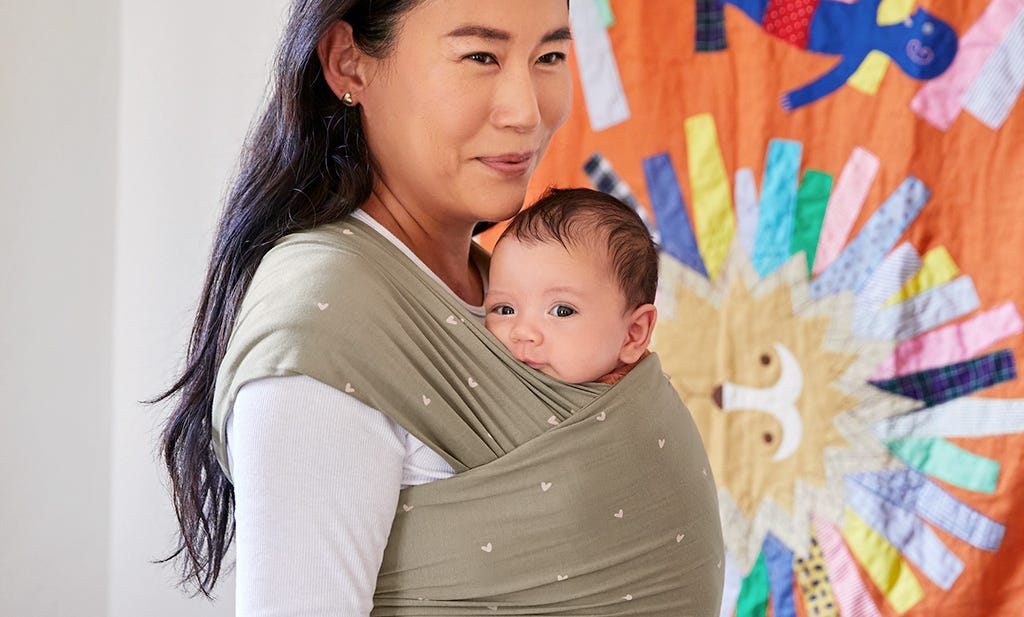
Starting with our Aura wrap, we have combined two trendy colours and decorated the olive fabric with pretty little hearts in beige. Fans of our wraps should take a look at the new Aura Wrap Olive Hearts.
You can buy our newborn Embrace carrier
Leaving home with baby for the first time can be seriously daunting. You ask yourself a hundred questions: “What do I need to take for baby?” “Will they be too hot? Too cold?” “Should I take the carrier or the stroller?” “How many nappies should I take?” “What if they need to feed while I’m gone?” and so on! There are so many things to think about and the list of contingencies just gets longer and longer.
Don’t worry, we've put together a few useful tips to make the first few times of leaving home easier.
Leaving home with baby for the first time - Everything you need to know
Prepare your bag

The first step is to prepare your change bag. Wipes, nappies, a change of clothes (or two!), nappy cream, a dummy (if you use one), maybe a toy and of course your baby carrier are all a good idea to take with you when you go out. And don't forget yourself: a bottle of water and a snack are priority number one for when you're out and about - especially if you're breast/chest feeding. And don’t forget
Preparing a meal or your favourite snack together with your baby or toddler can be really fun. Even if you see images of splattered walls, squished ingredients on the worktop and a completely soaked child in your mind's eye - cooking with children actually has many advantages for your little one and also for you as a family. Our experienced weaning coach Lola from DME Bébé in France will tell you what they are below.

- Encourage independence
Involving your child in meal preparation teaches them from a young age how to use the different kitchen utensils, but also how to do simple tasks like adding ingredients to the dish or mixing. If you are wondering how to do this with babies, there are two options: Depending on their age and abilities, you can put your child in their high chair and place the necessary ingredients on their little table so that they can reach them easily. Alternatively, you can carry your child in the front carry in your baby carrier (luckily you can wash it) and prepare
Parents of newborn babies are often nervous about placing their baby on their stomach. After all, your baby can't really hold its head up by itself yet so it’s understandable that when your little one starts to lie on their tummy, you want to quickly turn them onto their back.
And it’s no wonder if your baby grumbles at the start. The prone position or “tummy time” is not as easy for your baby at first because their head is so heavy. In addition, their spine is not yet erect in the double S-shape as it is in adults, and their hip joints are more forward so they can't lie down straight and have to work actively against this in the prone position. And sometimes they just don't feel like doing it.
What is the purpose of the prone position of a baby?
Even if the motivation is lacking, it is still important that your baby practices the prone position. The position adopted during tummy time has a great influence on your baby's motor development and has an incredible number of health benefits.
Our Ergobaby expert midwife, babywearing consultant and sleep specialist Katrin Ritter has been getting lots of questions about our baby bouncer, so we have put together a list of the most frequently asked questions, and answers here.
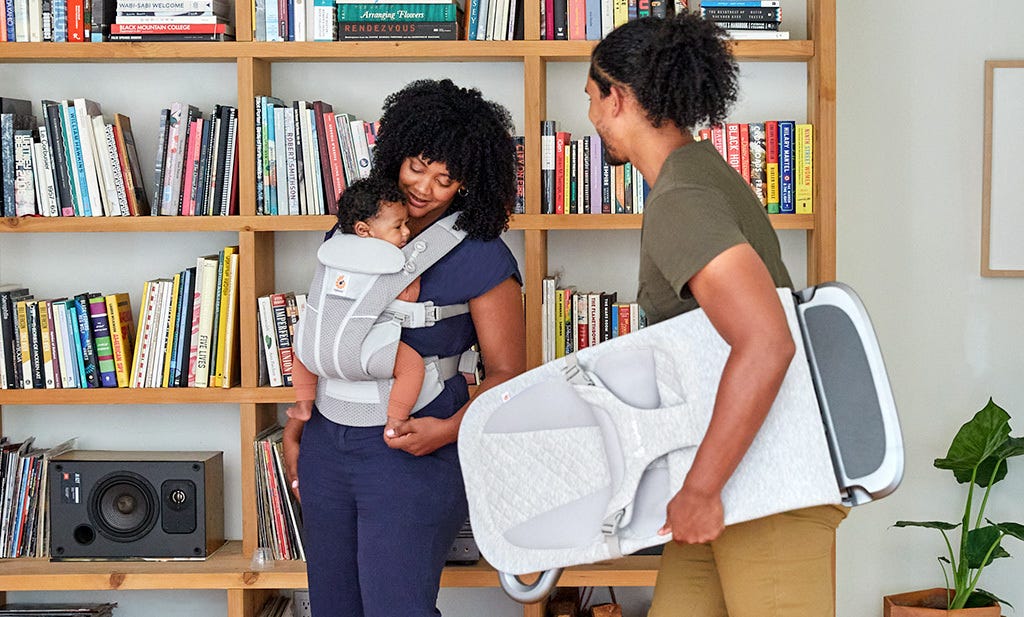
Baby bouncer: The most frequently asked questions
1. What are the benefits of a bouncer?
For most situations a baby carrier is the perfect solution at home to keep your baby close to you and still have your hands free. But, what about when you need to go to the toilet or jump in the shower? Then our bouncer is a practical, safe, ergonomic, and comfortable place for your child to relax and be close to you. Most bouncers can be folded and are lightweight meaning they can be transported from room to room with ease. Our Evolve Bouncer even fits into a handy carry bag to take it with you to friends or family as a familiar place for your little one.
2. What age can you use a bouncer
You can use an ergonomic bouncer like our Ergobaby Evolve 3-in-1 Bouncer with a

